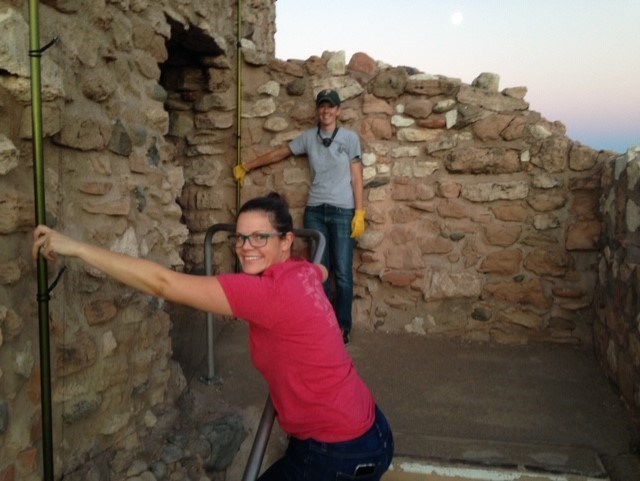|
When visiting Tuzigoot National Monument, you will read and hear many stories. Park staff, local people, visitors, and the place itself work together to tell these stories. Studying the plants and animals who call our park home is an essential part of land management. If we know who else lives here, park management teams can make informed decisions about how to sustain healthy habitats. 
NPS At least seventeen species of bats have been detected in the park through a variety of surveys. Biologists use mist-nets to catch bats and acoustic recorders to record the echolocation calls of bats, which are unique to each species. These surveys allow biologists to identify the species and reproductive status of each animal, and check for signs of disease such as white-nose syndrome. Through the advancement in technology over the years, it has been easier for biologists to detect bats using passive methods that include acoustic recording and DNA sampling of guano. These passive methods are less invasive, require less handling of animals, and allow for more flexible monitoring programs. For more information about bat biology and conservation in national parks across the country, check out the National Park Service bat page. |
Last updated: May 26, 2025
